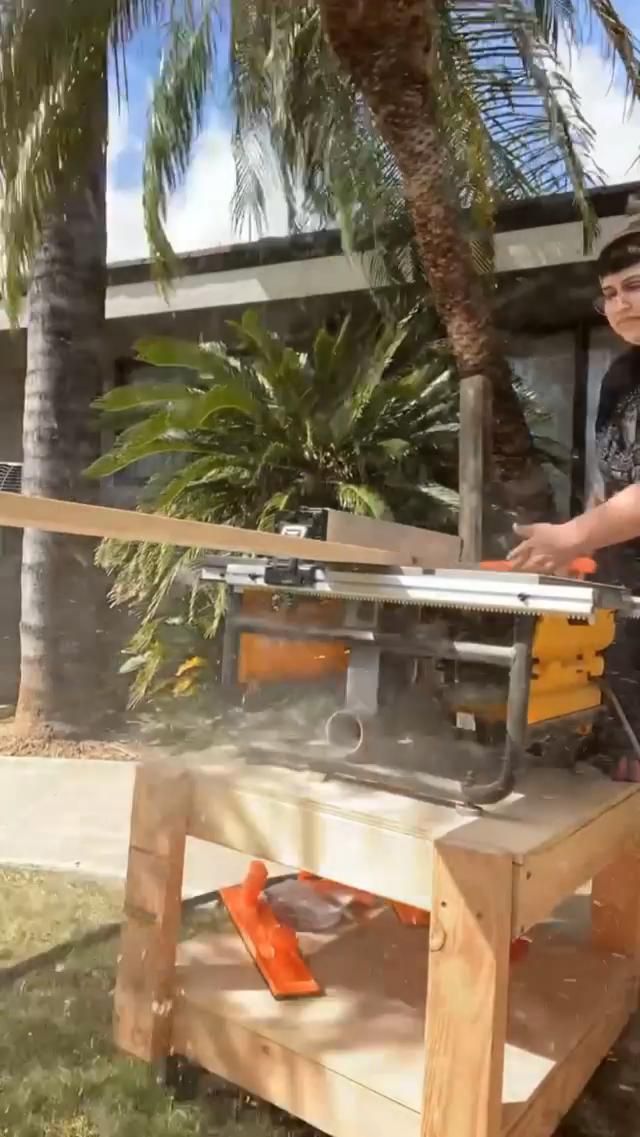Woodworking is a timeless craft that allows individuals to create amazing projects using wood as their main medium. If you’re wondering how to learn woodwork, understanding the basics is crucial. Whether you’re a beginner or looking to enhance your skills, mastering the fundamentals of woodworking is essential for success in this craft.
One of the first steps in learning woodwork is familiarizing yourself with the various tools used in this craft. From hand tools like chisels and saws to power tools such as drills and sanders, having the right equipment is key to creating quality woodwork projects. Understanding how each tool works and its purpose will significantly impact your woodworking journey.
In addition to tools, knowing how to choose the right type of wood for your projects is equally important. Different types of wood have distinct characteristics that can affect the outcome of your work. Learning about grain patterns, hardness, and durability of various woods will help you select the best material for your specific project. Stay tuned for more information on essential tools and tips for beginners looking to delve into the world of woodworking.
Essential Tools for Woodworking Beginners
Woodworking is a rewarding and creative skill that allows individuals to create beautiful and practical pieces of furniture and decorations. For beginners looking to embark on their woodworking journey, it is essential to have the right tools in order to successfully complete projects. There are a few basic tools that every woodworking beginner should have in their arsenal.
One of the most important tools for woodworking beginners is a good quality tape measure. Accurate measurements are crucial in woodworking, as even the smallest discrepancy can lead to mistakes in cutting and assembly. A tape measure allows woodworkers to precisely measure and mark their materials before working on them.
Another essential tool for woodworking beginners is a saw. A handsaw or a circular saw can be used for cutting wood into different shapes and sizes. It is important to choose the right type of saw based on the project at hand, whether it be cross cuts, rip cuts, or intricate designs. Additionally, having a set of chisels and carving tools will allow woodworkers to create detailed designs and finishes on their projects.
Lastly, having a set of clamps is crucial for ensuring that pieces of wood stay securely in place during cutting, gluing, and assembling. Clamps come in various sizes and types like bar clamps, pipe clamps, or C-clamps, allowing woodworkers to hold different shapes and sizes together firmly. These essential tools for woodworking beginners will lay the foundation for successful projects as they learn how to work with wood effectively.
As aspiring woodworkers start their journey into this craft, learning how to use these essential tools properly is key. Classes at local woodworking shops or online tutorials can provide valuable guidance on how to handle each tool safely and effectively. Practice plays a vital role in mastering these tools; by honing their skills with consistent practice, beginners can gradually improve their woodworking techniques and create impressive pieces over time.
Choosing the Right Type of Wood for Your Projects
Woodworking is a versatile and rewarding craft that allows individuals to create beautiful and functional pieces using different types of wood. One of the essential aspects of woodworking is choosing the right type of wood for your projects. Each type of wood has its own unique characteristics, including grain patterns, density, color, and durability. Understanding these characteristics will help you select the best wood for your specific project.
When choosing the right type of wood for your woodworking project, it’s important to consider the intended use of the final piece. For example, if you’re building a sturdy piece of furniture that needs to withstand heavy use, hardwoods like oak, maple, or cherry would be ideal choices due to their strength and durability.
On the other hand, if you’re creating decorative items or small woodworking projects, softwoods like pine or cedar may be more suitable due to their ease of working with and affordability.
Another factor to consider when selecting wood for your project is the appearance and aesthetic qualities you desire. Different types of wood offer a variety of grain patterns and colors that can enhance the visual appeal of your finished piece.
For example, walnut and mahogany are known for their rich, dark tones and elegant grain patterns, while cedar offers a light color with distinct knots and patterns. By understanding how different types of wood will look once finished, you can choose one that complements your design vision.
It’s also important to consider the workability of each type of wood when making your selection. Some woods are easier to cut, shape, and finish than others, making them more suitable for beginners or certain types of projects.
For example, maple is a dense hardwood that can be challenging to work with hand tools but produces stunning results when used in fine furniture making. Pine, on the other hand, is softer and easier to manipulate for beginner woodworkers learning how to learn woodwork through basic projects.
Safety Tips and Practices for Woodworkers
Woodworking is a rewarding hobby that allows individuals to create beautiful and functional pieces out of wood. However, it is important to prioritize safety when working with sharp tools and heavy machinery. Here are some essential safety tips and practices for woodworkers:
1. Wear Proper Safety Gear: Always wear appropriate protective gear such as safety glasses, ear protection, and a dust mask to prevent injuries and exposure to harmful substances.
2. Keep Your Workspace Organized: A clutter-free workspace not only helps improve efficiency but also reduces the risk of accidents caused by tripping over tools or materials.
3. Follow Tool Safety Guidelines: Before using any woodworking tool, make sure you understand how it works and how to operate it safely. Always use tools according to the manufacturer’s instructions.
4. Use Push Sticks and Blocks: When operating power tools such as table saws or jointers, always use push sticks or blocks to keep your hands at a safe distance from the cutting blade.
5. Keep Blades Sharp: Dull blades can cause accidents by slipping during cutting tasks. Regularly sharpen your blades or replace them when necessary.
6. Avoid Loose Clothing and Jewelry: Loose clothing, long sleeves, or dangling jewelry can get caught in rotating machinery, leading to serious injuries. Wear fitted clothing without any hanging accessories.
By following these safety tips and practices, woodworkers can enjoy their craft while minimizing the risk of accidents and injuries in the workshop.
Step-by-Step Guide on How to Start Woodworking
Starting your journey into the world of woodworking can be an exciting and fulfilling experience. Whether you’re interested in creating furniture, decorative items, or even small woodworking projects, learning how to work with wood can open up a whole new world of possibilities. Here is a step-by-step guide on how to start woodworking:
1. Set Up Your Workspace: Before diving into your first woodworking project, it’s important to have a suitable workspace. Ensure that you have enough room to move around comfortably and that your tools and materials are easily accessible.
2. Invest in Essential Tools: To kickstart your woodworking journey, you’ll need a set of basic tools such as a hammer, tape measure, saw, chisels, and sandpaper. As you progress, you can gradually add more specialized tools to your collection.
3. Learn Basic Woodworking Techniques: Familiarize yourself with foundational woodworking techniques such as measuring and marking wood accurately, cutting along the grain, joining pieces together using various methods like gluing or nailing, and finishing your projects with sanding and staining.
4. Practice Makes Perfect: The key to mastering any craft is practice. Start with simple projects like a wooden shelf or picture frame before moving on to more complex pieces. Remember that every project is an opportunity to learn and improve your skills.
5. Seek Guidance from Experienced Woodworkers: Don’t hesitate to reach out to experienced woodworkers for advice or join woodworking classes or workshops in your area. Learning from those who have expertise in the field can significantly accelerate your learning process.
By following these steps and staying committed to honing your woodworking skills, you’ll be well on your way to creating beautiful handmade pieces that showcase your craftsmanship and creativity. Remember that patience and persistence are essential when learning how to work with wood – enjoy the journey.
Joining Woodwork Classes and Workshops
Woodworking classes and workshops are excellent opportunities for beginners to gain practical knowledge and hands-on experience in the craft. Whether you’re interested in basic woodworking skills or looking to master advanced techniques, joining a class or workshop can provide valuable insights and guidance.
Benefits of Joining Woodwork Classes
One of the main benefits of joining woodworking classes is the structured learning environment it provides. In a class setting, you’ll have access to experienced instructors who can teach you proper techniques, offer feedback on your work, and answer any questions you may have. Additionally, being surrounded by like-minded individuals who share your passion for woodworking can be inspiring and motivating.
What to Expect in a Woodworking Class
Woodworking classes typically cover a range of topics, from tool safety and basic techniques to creating more complex projects. You can expect to learn how to use essential woodworking tools, read project plans, measure and cut wood accurately, assemble joinery, and finish your projects with sanding and staining techniques. Some classes may even focus on specific types of woodworking, such as furniture-making or woodturning.
Online Resources for Woodworking Classes
If attending in-person classes isn’t feasible for you, don’t worry – there are plenty of online resources available to help you learn how to work with wood. Websites like Skillshare, Udemy, and YouTube offer a wide range of woodworking courses taught by experts in the field. These online platforms allow you to learn at your own pace and convenience, making it easier than ever to start your woodworking journey from the comfort of your own home.
Learning From Woodworking Experts and Online Resources
Woodworking can be a rewarding and creative hobby or even a lucrative career for those who are passionate about working with wood. Learning from woodworking experts and utilizing online resources can be invaluable in advancing your skills and knowledge in this craft. Whether you’re just starting out or looking to hone your abilities, there are various ways to benefit from the expertise of seasoned woodworkers and the vast amount of information available online.
Seeking Guidance From Experienced Woodworkers
One of the best ways to learn how to work with wood effectively is by seeking guidance from experienced woodworkers. Consider reaching out to local woodworking clubs or organizations to connect with like-minded individuals who are willing to share their knowledge and experience.
Attending workshops, seminars, or demonstrations hosted by experts in the field can also provide valuable insights and hands-on learning opportunities. Don’t hesitate to ask questions, seek advice, and observe techniques used by seasoned professionals to improve your woodworking skills.
Utilizing Online Resources for Education and Inspiration
The internet has become a treasure trove of information for aspiring woodworkers, offering a wide range of tutorials, guides, forums, videos, and blogs dedicated to all aspects of woodworking. Make use of online resources such as instructional websites, YouTube channels, social media groups, and online courses to expand your understanding of different woodworking techniques, tools, projects, and trends.
Platforms like woodworking forums can also allow you to interact with fellow enthusiasts, ask for feedback on your work, or seek recommendations on resources that can help you enhance your skills further.
Continuous Learning and Skill Development
Woodworking is a craft that requires ongoing learning and skill development to master various techniques and create high-quality projects. Stay motivated by setting goals for yourself, experimenting with different woodworking methods, practicing regularly, and challenging yourself with increasingly complex projects.
Remember that learning from both woodworking experts and online resources is an ongoing process that can open up new possibilities for creativity and proficiency in this timeless craft. By continuously seeking education and inspiration from those who have expertise in woodworking, you can enhance your abilities and take your passion for working with wood to the next level.
Advanced Woodworking Techniques to Master
Once you have a good grasp of the basic woodworking skills and have completed a few projects, you may be ready to move on to more advanced techniques. One key aspect of advancing in woodworking is learning how to work with more intricate designs and joinery methods.
This can include techniques such as dovetail joints, mortise and tenon joints, and complex wood carving. Taking the time to practice and master these techniques can elevate your woodworking projects to a new level of craftsmanship.
In addition to mastering advanced joinery techniques, another aspect of advancing in woodworking is exploring different finishing methods. Finishing plays a crucial role in not only protecting your woodwork but also enhancing its overall appearance. Experimenting with various finishes such as stains, varnishes, oils, and paints can help you achieve the desired look for your projects. Learning how to properly apply these finishes can make a significant difference in the final outcome of your woodworking creations.
Moreover, delving into more specialized areas of woodworking, such as woodturning or marquetry, can provide new challenges and opportunities for creativity. Woodturning involves shaping wood on a lathe to create items like bowls, spindles, or decorative objects. On the other hand, marquetry involves the art of creating intricate designs by piecing together different types of wood veneers. Both disciplines require patience, precision, and attention to detail but can add unique dimensions to your woodworking repertoire.
| Woodworking Technique | Description |
|---|---|
| Dovetail Joints | An advanced joint method that requires precision cutting and fitting for strong connections. |
| Wood Carving | The art of shaping wood using carving tools to create detailed designs and textures. |
| Marquetry | A technique involving assembling thin pieces of wood veneer into intricate patterns or pictures. |
Building Your First Woodwork Project
In conclusion, learning how to do woodwork is an enriching and satisfying journey that can lead to the creation of beautiful and functional pieces. By starting with the basics, understanding essential tools, choosing the right type of wood, and prioritizing safety, beginners can lay a solid foundation for their woodworking skills. Following a step-by-step guide can help newcomers navigate the process effectively and build their confidence in working with wood.
For those looking to delve deeper into woodworking, joining classes and workshops can provide valuable hands-on experience and mentorship. Learning from seasoned experts in the field and exploring online resources can offer additional insights and techniques to expand one’s skill set. While mastering advanced woodworking techniques may seem daunting at first, consistent practice and dedication can lead to significant growth in craftsmanship.
Ultimately, building your first woodwork project as a beginner is a milestone worth celebrating. Through patience, perseverance, and continuous learning, aspiring woodworkers can hone their abilities and take on more challenging projects with confidence. Embracing the creative process and enjoying the satisfaction of bringing ideas to life through woodworking are key aspects of this rewarding craft.
Frequently Asked Questions
Can You Teach Yourself Woodworking?
Yes, it is absolutely possible to teach yourself woodworking. There are plenty of resources available online such as tutorials, articles, and videos that can help you get started. Additionally, investing in some basic tools and practicing your skills through small projects can also aid in self-teaching.
How Do I Start Learning Carpentry?
To start learning carpentry, consider taking a beginner’s course or workshop to gain foundational knowledge and skills. You can also seek out apprenticeship programs with experienced carpenters to learn hands-on. Building a solid collection of tools and practicing regularly will also help you improve your carpentry skills over time.
How Do I Get Into Woodworking With No Experience?
If you have no experience in woodworking but want to get into it, start by familiarizing yourself with the basic tools and materials used in the craft. Consider enrolling in a beginner’s class at a local community center or woodworking school to learn essential techniques.
Starting with simple projects like shelves or small furniture pieces can help build your confidence and expertise gradually. Practice, patience, and a willingness to learn from mistakes are key when getting into woodworking with no prior experience.

Hi everyone! I’m a woodworker and blogger, and this is my woodworking blog. In my blog, I share tips and tricks for woodworkers of all skill levels, as well as project ideas that you can try yourself.





